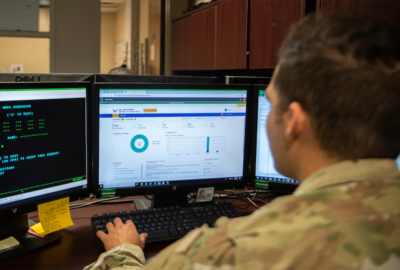Defense agencies let experience inform planning and programming
DISA staff are using program management tools and principles to monitor and track plans internally, while the Air Force is conducting weekly IT pulse surveys.
User experience has improved far faster in the private sector and for individuals than in the federal government, let alone in the military. But a pandemic-transformed world presents prime opportunities for Defense agencies to factor user experience into planning and programming.
At the Defense Information Systems Agency, staff are using program management tools and principles to monitor and track plans internally. Jason Martin, executive director of Component Acquisitions in the Digital Capabilities & Security Center at DISA, said he still has to follow the DoD Instruction 5000 series for acquisition but the agency has developed acquisition processes and dates to ensure consistent program management practices and governance across the board. Over the past few months, Martin said he has discussed what works and what does not with all 130 program managers in the agency, which led to some “really interesting” revelations about personnel, personnel management, funding and overall processes.
“What I found was, we had varying degrees of expertise, knowledge, and information sharing going on. So what we did is we set up and kind of retooled the way we were doing in-progress reviews, or director progress reviews … we decided to shine a little bit different light with the new director inbound with very little knowledge of our existing programs, and give him a real deep dive on every program,” Martin said during a webinar hosted by FedInsider this week. “And we did that in a standard form, various forms behind the scenes that we don’t produce outwardly, but from an internal tracking mechanism so we’re all on the same page, and the director knew exactly what the GS — pick your favorite GS grade — at any given contractors on a project.”
He said standardization was the goal, and this way his team could assess in a stoplight-type chart format what was working in cost, performance or scheduling. Over the summer, his office combed through every portfolio to establish a baseline setting, and now they can operate in a maintenance mode.
The need to get different organizations moving in the same direction is one Colt Whittall understands as well. As chief experience officer for the Air Force — a role created to put greater focus on improving user experience IT in the service — Whittall said one way to achieve that is getting everyone to look at the same data and metrics. Whether that data is performance-issue-related or user-experience-related, he said that starts to force alignment on what needles have to move.
However, to do that, the tools being used for planning and programming have to be well designed and easy to use, he said.
As agencies try to improve user experience both internally and externally, DISA for one has laid out a transformation plan, but the needs are different depending on the initiative. With the Fourth Estate Network Optimization initiative, for example — which aims to consolidate 14 agencies onto a new DoDNET network by 2025 — Martin said they want to provide desktop end-user experience.
“Do we take user groups from the various agencies that we’re working with, we look internally, we do both? We bring in support from parts of industry, [Federally funded research and development centers] — whatever the case might be? Well, the answer is all of the above, of course,” he said.
DISA also needs to reach out to user groups on a weekly or even daily basis about what enterprise service offerings make sense, because warfighters in theater will have unique needs for providing logistical information to a garrison, he said.
“Warfighter effectiveness” is actually Whittall’s preferred term for user experience when it pertains to an Air Force audience, as he said in that case they equal essentially the same thing.
“It’s about speed, reliability, agility, designed — with you, for the way you use it in the real world, out in the wild, and not necessarily the way we think back at the Pentagon ought to be,” he said. “And if we do all of that, and it’s highly effective, responsive, secure, you get a great warfighter, you get warfighter effectiveness.”
Whittall said when he joined the Air Force there was no great way to measure how the service was supporting warfighter readiness. They have since stood up an online pulse survey of roughly 2% of the user base on IT matters every week, which he said may sound strange but it mirrors practices in the commercial world — and if the Air Force wants a commercial-type user experience that comes with the territory. This way, they can track data over time.
Another feedback tool is digital experience monitoring, wherein agents are put on about 1% of endpoints, we focused on the most accurate endpoints the 65 largest bases.
“What this does is it tells us exactly what airmen are experiencing there at the glass as they interact with our software and our tools, as they boot up the machine in the morning, as they go to the applications they need to do their work,” he said. “If a particular service is having trouble and causing background and crashes and instability, we know exactly what that is, and we can respond to it.”
He said it provides helpful data for their contractor community: “Sobering conversation, very actionable conversation. But it allows us to drill in and produce warfighter effectiveness, and move the needle that we need to move on performance, reliability and responsiveness.”
Copyright © 2025 Federal News Network. All rights reserved. This website is not intended for users located within the European Economic Area.
Amelia Brust is a digital editor at Federal News Network.
Follow @abrustWFED






